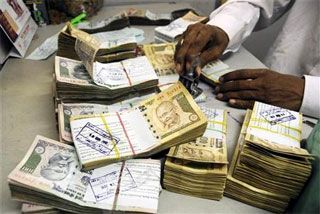The government holds stakes ranging from 56% to 84% in 27 state-run banks
 The Cabinet approved plans to raise about Rs 1.6 trillion ($25.76 billion) by selling some of its stakes in state-run banks by 2019, a government statement said on Wednesday.
The Cabinet approved plans to raise about Rs 1.6 trillion ($25.76 billion) by selling some of its stakes in state-run banks by 2019, a government statement said on Wednesday.
The government holds stakes ranging from 56 per cent to 84 per cent in 27 state-run banks. They account for 70 per cent of total outstanding loans of about $1 trillion in Asia's third-largest economy.
The state-run lenders are estimated to need as much as $60 billion in capital over the next four years to meet new global regulations and to build a buffer against rising bad loans.
"While permitting banks to raise capital from the market, the banks would be advised to preserve the Government holding at minimum 52 per cent," the statement said, adding the banks could phase in sales of shares in the market.
Cutting the government stakes would substantially reduce the requirement to provide for injections of capital into public-sector banks, Minister of State for Finance Jayant Sinha told parliament last month.
While the government has in the past funded the state lenders - by about $13 billion over the past decade - it is now striving to reduce the capital injections to lower its budget deficit.
The government said it would need to put Rs 788.95 billion ($12.70 billion) into the banks over the next four years to maintain 52 per cent stakes. It could get nearly Rs 345 billion ($5.56 billion) as dividends.
Analysts say bigger state-run banks have a better chance of raising capital from the market. They remain sceptical that smaller lenders can attract investors.
Indian state-run banks have been burdened by high levels of bad debt and by corporate governance issues. An RBI-appointed panel this year recommended the government cut its stake in state lenders to less than 50 per cent.













 © 2025
© 2025